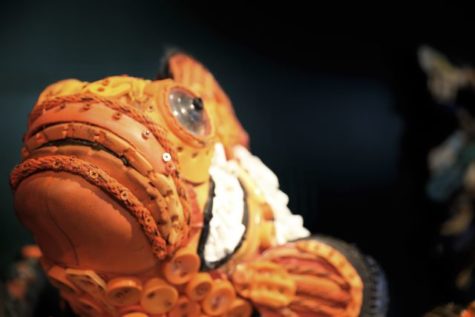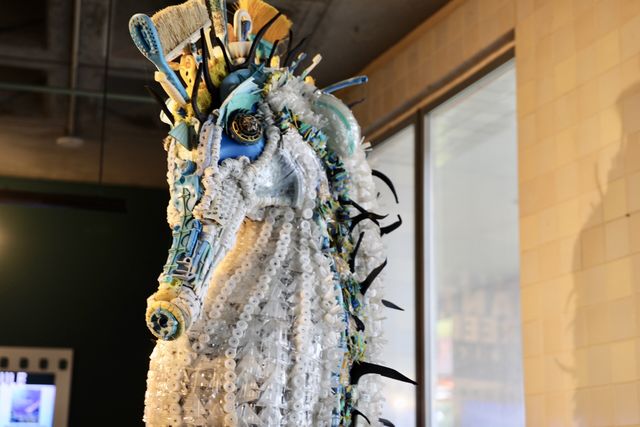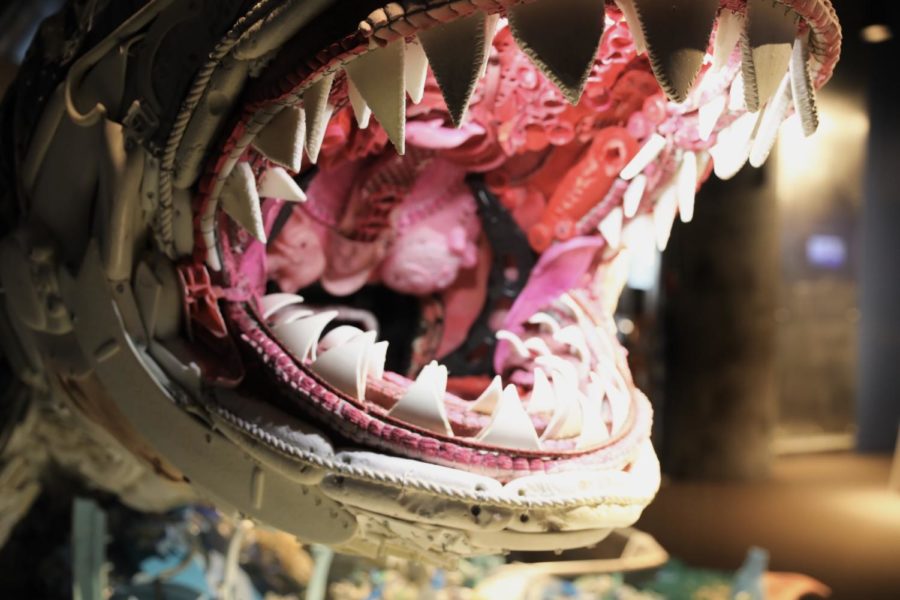Trash to Treasure: Audubon Aquarium aims to teach about ocean pollution with art
A toilet seat and other litter make up the sculpture of a Great White Shark. Featured sculptures were made up of litter. Photo credit: Andres Fuentes
April 7, 2019
A toilet seat, car bumper, bleach bottles and flip flops are all items that can plague a marine environment, but the Audubon Aquarium of the Americas has such items on display as art pieces.
The aquarium welcomed Angela Pozzi’s “Washed Ashore: Art to Save the Sea” series, which depicts sculptures of animals created with litter found in their environments.
The sculptures range from a great white shark all the way to a clownfish, all made from various plastic household items found along the Pacific coast.

Orange-colored litter makes up a clownfish sculpture. The Audubon Aquarium of the Americas has numerous sculptures on display for their guests.
For Stephanie Smith, administrative coordinator for Audubon Educational Programs, the sculptures represent something fun and engaging for the family while also being educational.
“Everyone is really receptive to (the sculptures),” she said. “I like coming out and checking them. Every time you look at them, you see something you’ve never seen before. It’s just an eye-opening experience.”
Smith says it’s a game of Eye Spy, as families come together to admire the marine-inspired pieces.
“The kids love to take their picture with (the sculptures) and point out objects. A lot of things are common items that you might have,” Smith said.
With the sculptures spreading the message of the dangers of plastic pollution, the aquarium is also doing their part to help ecosystems all over the world.
“We try to practice what we preach,” Smith said. “Audubon has done our part to cut back on plastic pollution. We have phased out our plastic bags in our gift shops. We offer paper bags or reusable bags. We’ve also phased out straws at our facility and we don’t use plastic water bottles anymore. We use aluminum cans.”
And while the pieces showcase the effects of ocean pollution, Smith stresses the impact plastic has on life on both land and in the sea.
“Plastic, while you can recycle it, it doesn’t biodegrade. Plastic is here forever. So (the sculptures) highlight the magnitude of plastic pollution.”
The sculptures will be on display until April 30 at the aquarium and the Audubon Zoo.

Orange colored litter makes up a clownfish sculpture. The Audubon Aquarium of the Americas has numerous sculptures on display for their guests.








